Last year, you may remember, Louisa Mallard hatched some hen eggs for us. (See here) Unfortunately, none of them were females and only one survived. Strange Duckling was a handsome boy, but he and his father, Jonathon Livingstone Chicken, could not live amicably together, so he had to go.
This year, the duck ladies have been laying for months. As well as Louisa and Priti, we had Dee, Dozy and Beaky, the three girls from the clutch of runner ducklings that Priti hatched last year. Poor Dozy had a nasty egg-laying accident and is no longer with us.
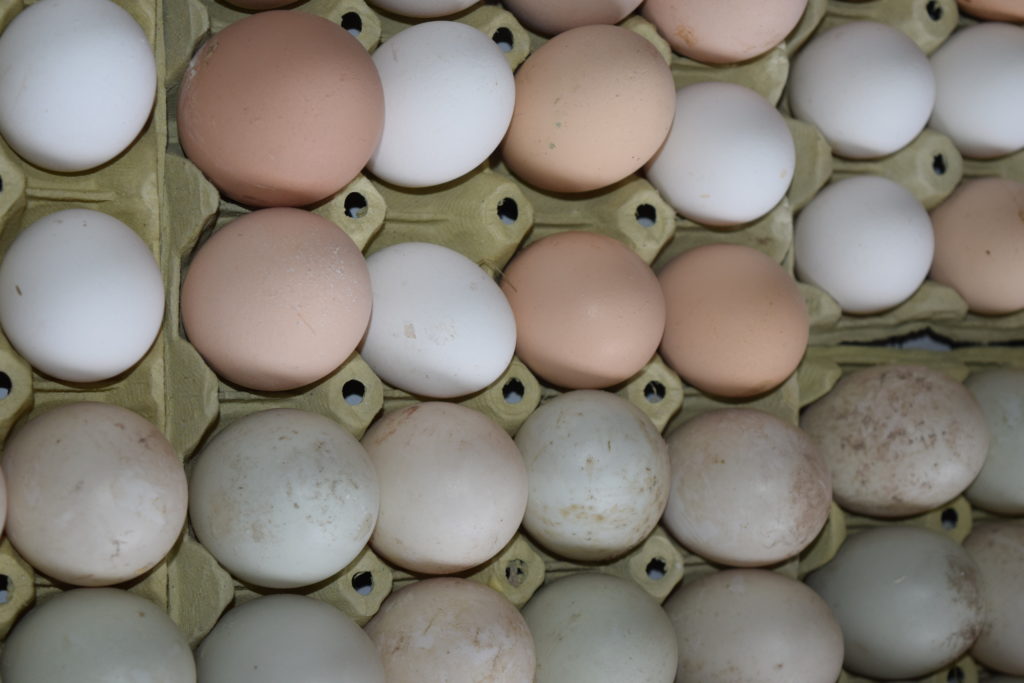
Runner duck eggs are a similar size to our hens’ eggs. Hen eggs above, duck eggs below in various shades of bluey-green
Louisa showed signs of going broody again, but has wised up to the hen eggs. We tried several times to swap her little blue eggs for hen eggs, but she was having none of it. We wanted some more ducklings in any case, so we changed tacks and swapped her eggs for runner duck eggs, so that Priti and her daughters would not go broody and stop laying. It is better for us not to have more mallards, as they lay fewer, smaller eggs.
Louisa seemed perfectly happy to keep laying and having her eggs replaced until she had eleven in the little nest she had made in the triangle house where she and Pablo stay while the male runners are feeling hormonal and aggressive.
Geoff noticed that the eleventh egg was one of Louisa’s own, but did not have the heart to turf her off the nest and steal it. She was ensconced and he did not want to upset her.
We put the estimated due date on the calendar and settled into the waiting game.

I spy a little ducky beak! (bottom left)
Three days before the due date, seven tiny, fluffy ducklings emerged. Six runners and one mallard. The following day, the last four eggs hatched, but sadly, the little mallard had died overnight.
We already had some photographs of the ducklings taken and downloaded when the calendar sent us an email informing us that ‘Ducklings should begin to hatch today.’ It is supposed to take about twenty-eight days to incubate runner ducks, but they can hatch sooner if the weather is warm, or if you just failed to notice when the mother started sitting. As things have been chaotic here, I suspect for us it was the latter!
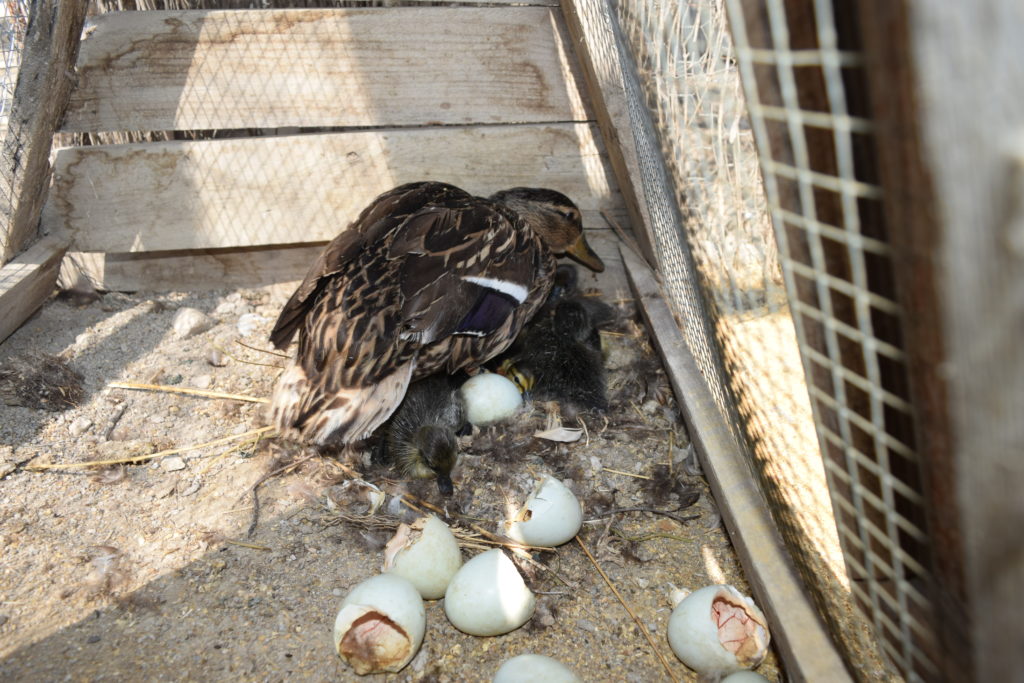
It’s easier to see the empty shells than it is to spot the babies nestled under their Mum
As before, Louisa is being a very good mother. Geoff put several large plant pot saucers in the little enclosure around the triangle house, so that the little ones could learn to paddle in shallow water. Louisa is very protective of her little brood and they are quite skittish, so it is not very easy to get good photographs.
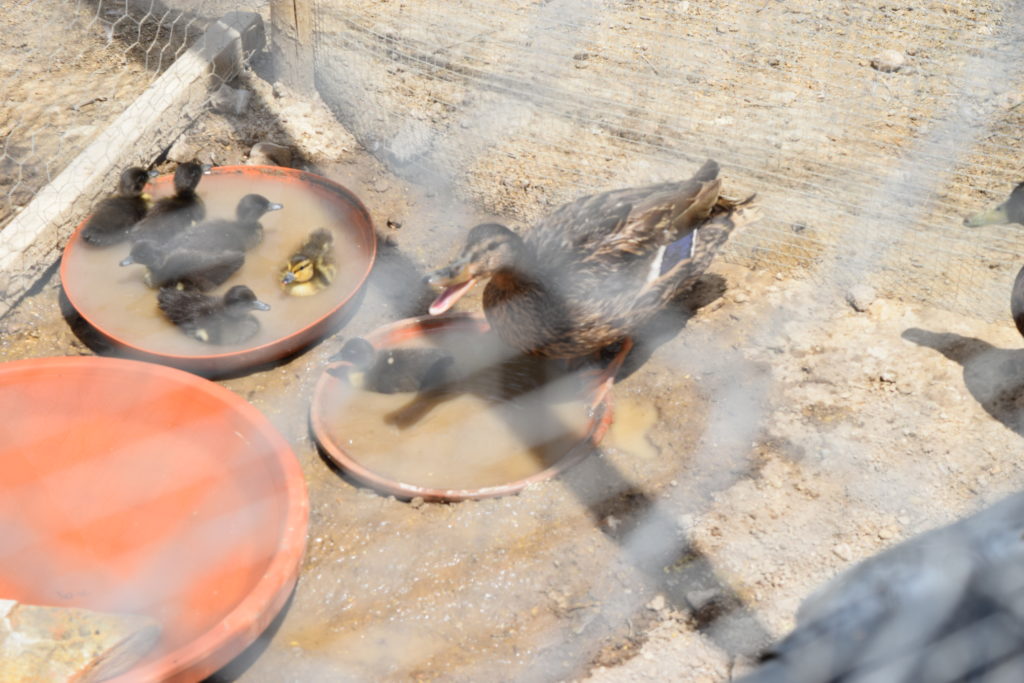
Proud Mum. Spot the little mallard, smaller than the others and more yellow markings
It will be a few weeks before they can be trusted to try the ramp and the bath tub. Actually, it is more that the grown up runners can’t be trusted with the babies. We would want to supervise them for a little while after the little ones are introduced to the larger ducks. I am still on crutches and Geoff is run ragged looking after the menagerie and me, without having to add duck kindergarten supervision to his ‘to do’ list.
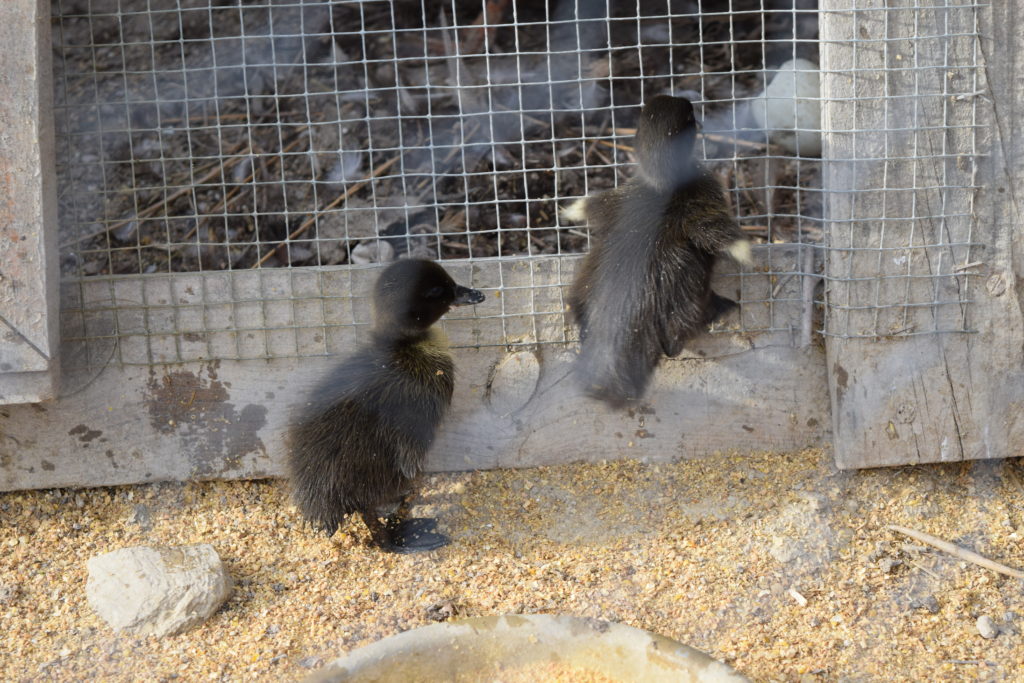
This little one has forgotten where the door is 🙂
The ducklings are two weeks old now and are happily playing, eating and dabbling, proudly supervised by Pablo and Louisa. We are in no great rush to name them, especially as I cannot get down there often enough to learn to tell them apart. We are hoping that they will defy the odds and all be females. Runner duck eggs are delicious and there is quite a demand for them locally. Our existing three ladies are having trouble keeping up.
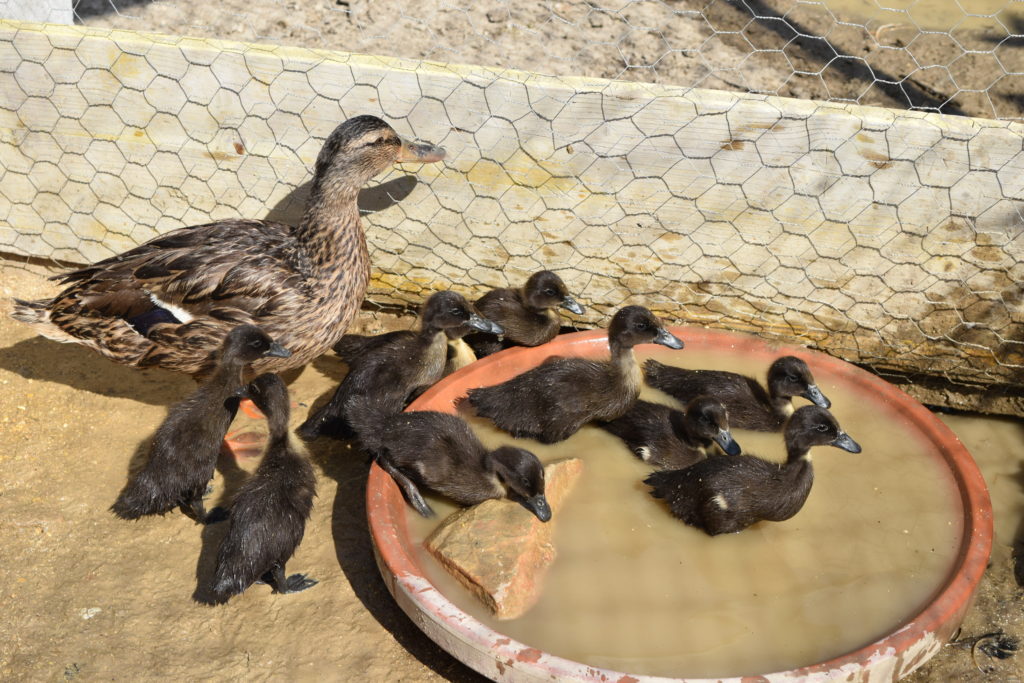
Bath time being closely supervised. For a short video of the little darlings, click here
Once they grow their feathers and start to make more grown-up noises, it should be easy to tell who is what Until then, we shall enjoy their antics and share a few pictures of their progress from time to time.

